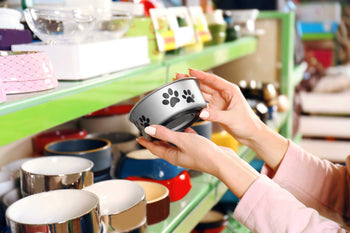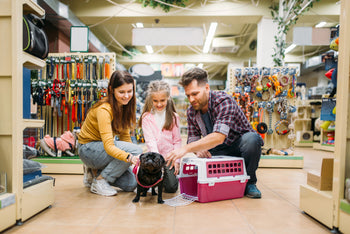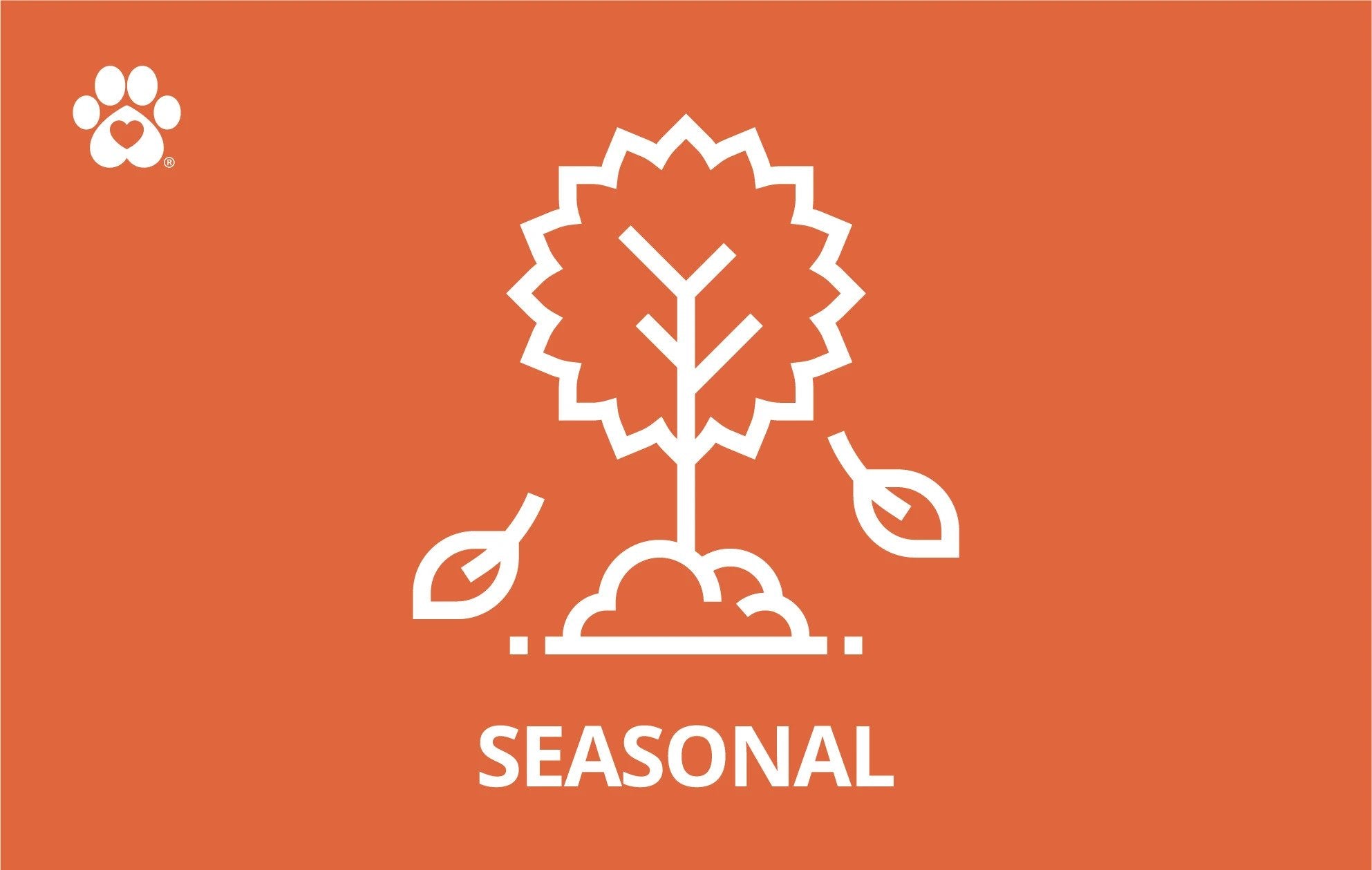- In:
- Merchandising,
- Operations
Top 10 Merchandising Tips for your Pet Store
"With brand new shelving, registers, and products along with a hectic grand opening schedule, it may be hard to remember that the “new smell” doesn’t last forever."
You’ve got the floor plan, wall color, and inventory ready to go, yet you still have some doubts about how well your epic displays will translate to customers. Will they be interested? Are the belly bands in the right place? The diapers? The food? If these thoughts have ran through your head, read on! This article is all about tips and tricks to keep in mind when building out your store.
Follow along and you’ll have tails waggin’ at your door in no time.
Cleanliness is next to Godliness. Pet owners know that with pets comes the occasional clean up, and it’s the same for your store. Customers relate cleanliness to newness and value. This means assigning an employee or two to dust, sweep, mop, and any other minor cleaning duties each week (don’t forget the bathrooms!).
Cleanliness adds up to a more positive customer experience that will make people want to come back again. This is especially important to keep in mind if you are a new business. With brand new shelving, registers, and products along with a hectic grand opening schedule, it may be hard to remember that the “new smell” doesn’t last forever. First impressions are very important.
Face and front always. Visual merchandising is important for your pet store. It is the process where you design your shelves layout, your floor layout, and the way you arrange your products.
When deciding your store’s layout, you need to know what your customers are like. Are they shopping in a hurry or just taking their time? Do they opt for self-service features or will your employees guide them? Do they want to find exactly what they need immediately, or are they up to discovering items along the way?
Also when doing this, ask yourself “What is my brand?” Your customers should be able to know this as soon as they step inside your store. Make sure each product’s label is facing front always. This is the best position for best viewing so that your customers will easily remember your name!
To the right. According to many studies conducted regarding how people move around stores, 80 percent of the population looks to the right when entering a store. The English language reads from left to right, and the majority is right-handed -- this is the invariant right.
Therefore, by positioning more expensive items or on sale items on the right side as a customer enters your store, you can ensure optimum and frequent visibility for these products and sales for items in this setting.
Fill your shelves. A store with full shelves sells! Many pet stores are small and only carry a limited variety of products. This is okay, but it can also lead to empty shelves or awkward spacing. Get creative! If your store has large shelving but you only carry three or four products per aisle, consider filling the extra space with decorations, fast facts about the items displayed, or call to actions. Empty shelves and out-of-stock products will force your customers to transfer to another store and this will risk the sales of not just one product but an entire basket of products!
Show your price. This one might be a bit obvious, but it’s something a lot of retailers forget when setting up: the price tags. When you’re out to buy something, what assumptions are made about products without a price tag? Answer: That it’s expensive. Research has shown that when consumers see the price of the products clearly, there’s a bigger chance that they’ll purchase it at first sight.
Showing your price helps you a lot when compared to that other pet stores that don’t display the prices of their products in a convenient viewing spot or at all for that matter. Customers don’t like the hassle of having to search/ask for the price and if they don’t have to. They will most likely purchase from you and this will keep you ahead of the game!
Another thing you can do is to use attractive price labels/tags to entice shoppers. You can also include words like ‘discounts,’ ‘on sale,’ ‘buy 1 take 1,’ (and a lot more!) for these words will make customers think they are getting a great deal and savings, too!
Follow the two-finger rule. Just as horizontal empty space can kill sales, so can vertical empty space. Shelves should be spaced so there is no more than a two-finger-wide space between the top of the product and the bottom of the shelf above. This is in order for you to make more storage space for your products.
The two-finger rule asserts that your products are apportioned so that the top of the product on a shelf comes within two fingers of the shelf above the product. Remember that your goal is to make the most of the space you have because, in the retail business, there is a saying that goes “Space is Money.” And who doesn’t like money?!
Display product reviews. Product reviews can help your store in ways you probably don’t always think of. Most shoppers do not buy anything without knowing if the product is actually worth it and gets the job done like it is supposed to. They want to inform themselves ahead of time to be able to know the great, the not-so-great and the ugly things about a product. Product reviews will benefit you because the more good reviews you get, the more convinced shoppers will become to actually give your products a try! The bad reviews can benefit you, too! These serve as criticisms and aside from accepting the negative feedback, this is also a way for you to improve your products.
You can ask for customers to review their favorite products right there in your store after they purchase (top three words, short sentences, number and star ratings, etc.).You can ask them directly, have them fill out forms, answers short surveys/evaluation forms, send on-site requests and follow-up emails. Then, you can print out reviews and place them somewhere near shelf talkers (printed cards or signs that are attached to a store shelf to get a buyer’s attention). Or you can make it easy for consumers to find product reviews online on your website and/or on your social media.
Establish an e-commerce shop. Depending on the need, your customers will run to your store quick for an urgent matter, however, you should still consider offering your products online. This way you will have a wider audience reach and wider promotion reach. This will also give customers the option to wait a few days for not-so-urgent products, in exchange for the convenience of shopping from their living room.
An e-commerce shop will make shopping easier for your customers and will help you find new ones (people who might have never even entered your shop).
24/7 shopping anywhere. An online shop will give your customers the freedom to shop anytime and anywhere they want, providing convenience and accessibility.
More customers reached. While a physical store is great for people to actually see your products, it is limited to the people in that specific area. An online store, on the other hand, allows you to reach people from another state and maybe even from the other side of the world!
Fast facts. Most customers are always in a rush; most of the time, they've just run in on their way to doing some other errands. So set up quick and engaging snippets of fun facts about your store (what started it), your brand (how did you come up with the name), your products (what your products are made of, ways you can make your products more functional), your mission/vision, core values or anything interestings about dogs and cats that will catch your customers' eye as they rush down the aisle. Teach them a few things before they leave.
Boost that brand recognition. Your customers came to you for a reason: your products are great, you offer great customer service, your products are exactly what they need! Build their loyalty by giving them a chance to get to know you! Set up a corner in your pet store that shows facts on how you began, your goals, your vision. Or you can also hand out leaflets or send e-newsletters. It’ also best to have a corner in your store where customers can drop off their questions for you.
No matter how big or small your business is, the loyalty of your customers is important. To build loyalty, you have to be in constant communication with them (inform them on what’s new, send greetings, write newsletters), give perks and special discounts, conduct surveys for improvement and assessment of your customers’ needs.
You also have to make sure that your logo and brand colors are all over the place so they will easily remember it. You can place your logos on your products, on every aisle, and on the entrance and exit. On top of this, also keep in mind that you need to take the time to get to know them; a good way to approach this is to be active and engaging through your website and social media platforms and to your shoppers as they are walking through your store and checking out.
Chances are, if you already have a pet store, many of these tips and tricks are already in your back pocket. But, it’s always good to refresh and revamp to keep your customers on their toes and coming back for more.

"No matter how big or small your business is, the loyalty of your customers is important. To build loyalty, you have to be in constant communication with them."








